
I’m convinced that, fundamentally, there are two types of plant people. There are the folks who keep a select few houseplants, each carefully chosen for just a touch of greenery so as not to overwhelm the space. And then there’s the kind of plant people who already have dozens of houseplants and will always find room for another.
I’d fall firmly into the latter camp. Like George Costanza and his velvet, I would drape myself in plants if it were socially acceptable.
But when your collection gets to a point where every windowsill is full, all tabletops crowded, each corner stuffed, and whole shelves stocked – when it would appear you’ve run out of all available well-lit horizontal space – the only path forward for a plant maximalist is to make better use of the vertical plane.
Not to be dissuaded by the limits of physical space, plant enthusiasts have devised some pretty creative ways to display plants on high.
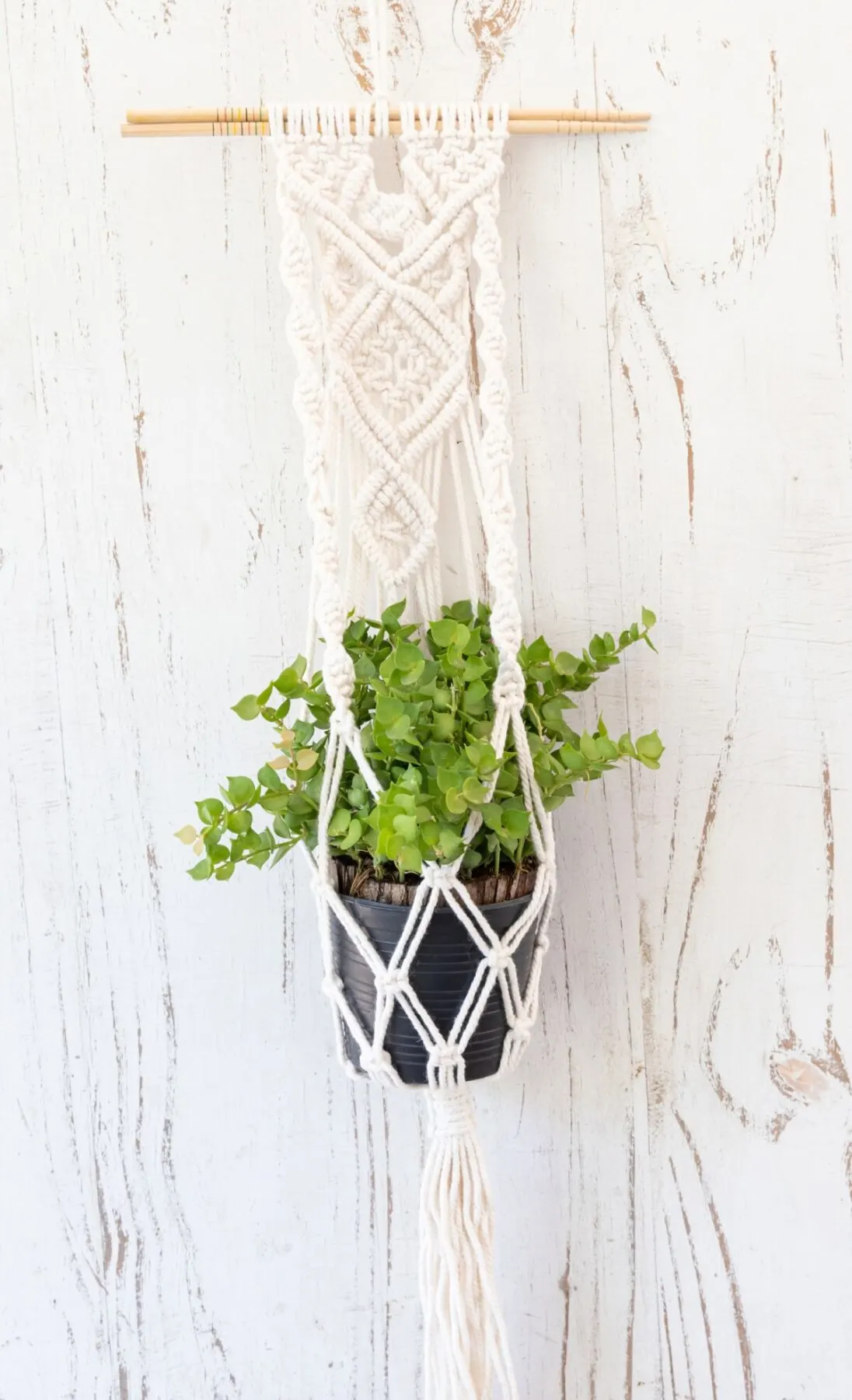
Macramé plant hangers have been popular since the 1970s and will always be timeless. You can find designs to hold one plant as well as multi-tiered hangers that house as many as three or four plants in a vertical column. Hook the hangers to the ceiling or along a curtain rod, and let the dangling foliage be your window treatment.
A clothing rack rolled in front of a sunny window is an excellent plant hanging option that doesn’t require marking up your walls. There are also shepherd hook stands, coat trees and hat racks, and the clever use of s-hooks to suspend plants from existing mantels and shelves.
The walls, though, shouldn’t be overlooked – they are an enormous canvas for displaying living plant art. In lieu of another floating shelf, vary it up with a few plant sconces, shaped in half-moons for wall mounting. Or for the more ambitious, you can plant a succulent garden in a picture frame. And for the hopelessly plant-smitten, you could even build a fully-automated living plant wall.
Whether you’re a plant minimalist or maximalist, houseplants are a superb way to make a house into a home. But adding vertically-oriented plants – that’s how you turn a home into a jungle.
And of course, the houseplants to hoist up are the ones that cascade, gracefully arch, vine wildly, and generally tumble and trundle out of their pots.
Here are some of the very best in show:
1. Pothos (Epipremnum spp.)
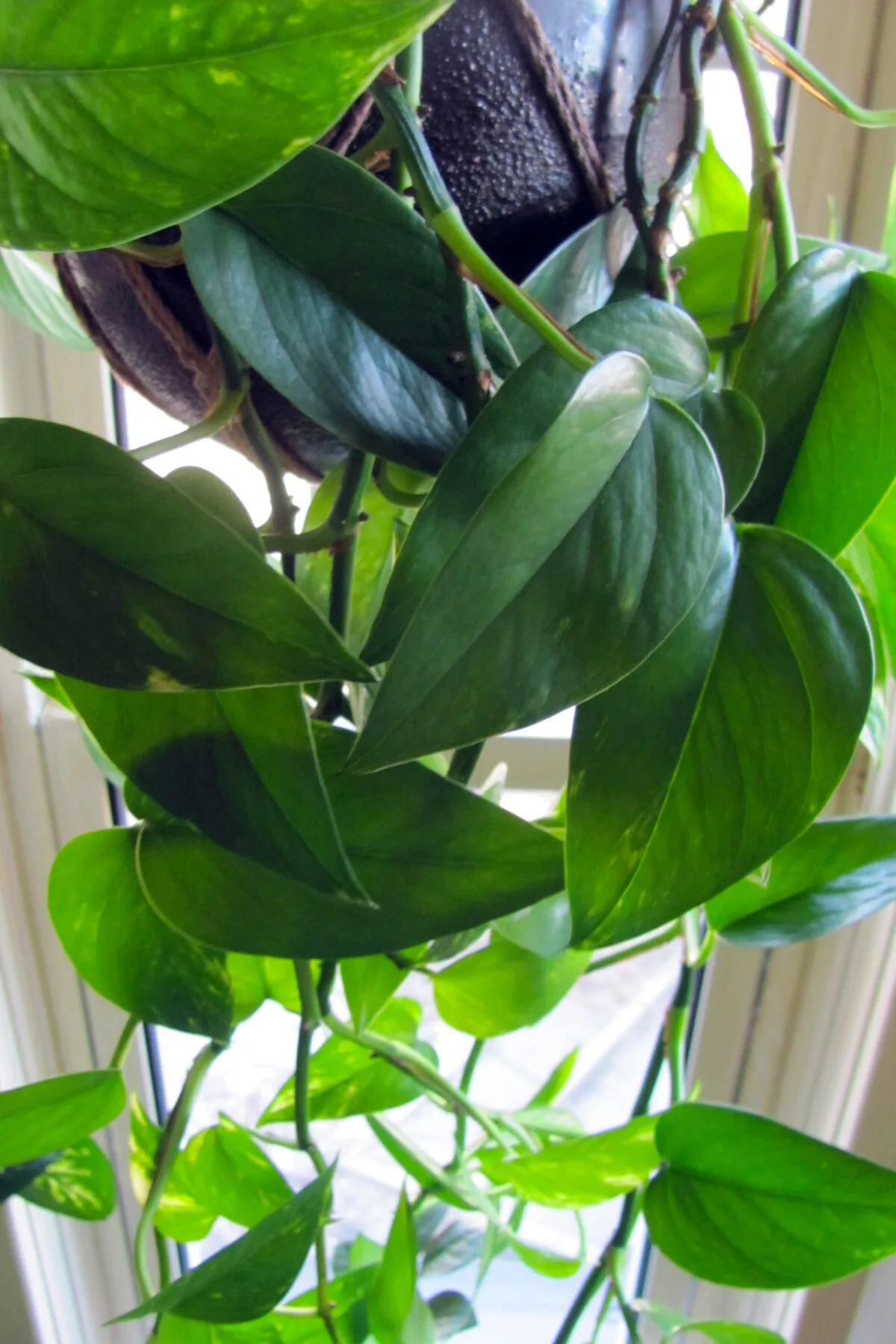
I’d suspect that for many plant people, pothos is a part of their origin story. It certainly was for me – my very first hanging houseplant was a golden pothos, and he’s still with me 22 years later.
Pothos is the complete package. Really hard to kill, lives in high or low light, will forgive forgotten or overzealous watering, doesn’t care about humidity, and is just the chillest houseplant all around. I’ve named mine, the Dude.
And with legs that go on for days, pothos vines can reach lengths of several feet indoors. So naturally, these are great to display spilling out from a suspended pot. Trim back vines as needed (and propagate some more pothos while you’re at it), or let them grow unimpeded. Long vines, pinned against a wall, are an excellent look for pothos.
2. Spider Plant (Chlorophytum comosum)
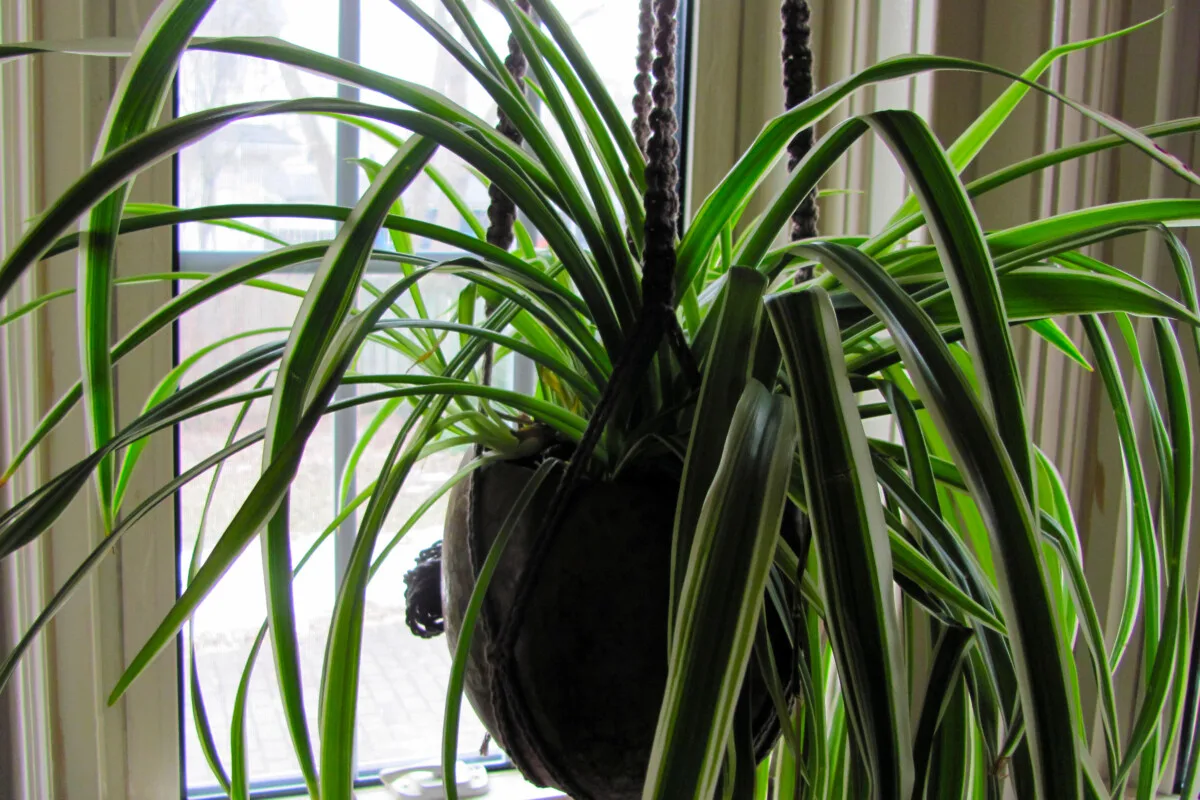
Almost as easygoing as pothos, it isn’t at all hard to keep a spider plant happy.
With good light and moist soil, spider plants grow a considerable mop of foliage. The long and slender green-and-white striped leaves emerge from a rosette, curving up and over the sides of the container in every which direction. Give the plants a high perch so they can stretch those spider legs freely.
In spring and summer, spider plants send out long stems above the foliage that arch down past the leaves. These bear tiny white flowers that eventually develop into little spiderettes you can detach to beget more spider plants.
But to improve your plant verticals, leave some spiderettes to grow back on the plant. In time, they can grow to be nearly as large as the mother plant. The cascade of several generations of mini spider plants creates a wonderful tiered effect.
3. Heartleaf Philodendron (Philodendron hederaceum)
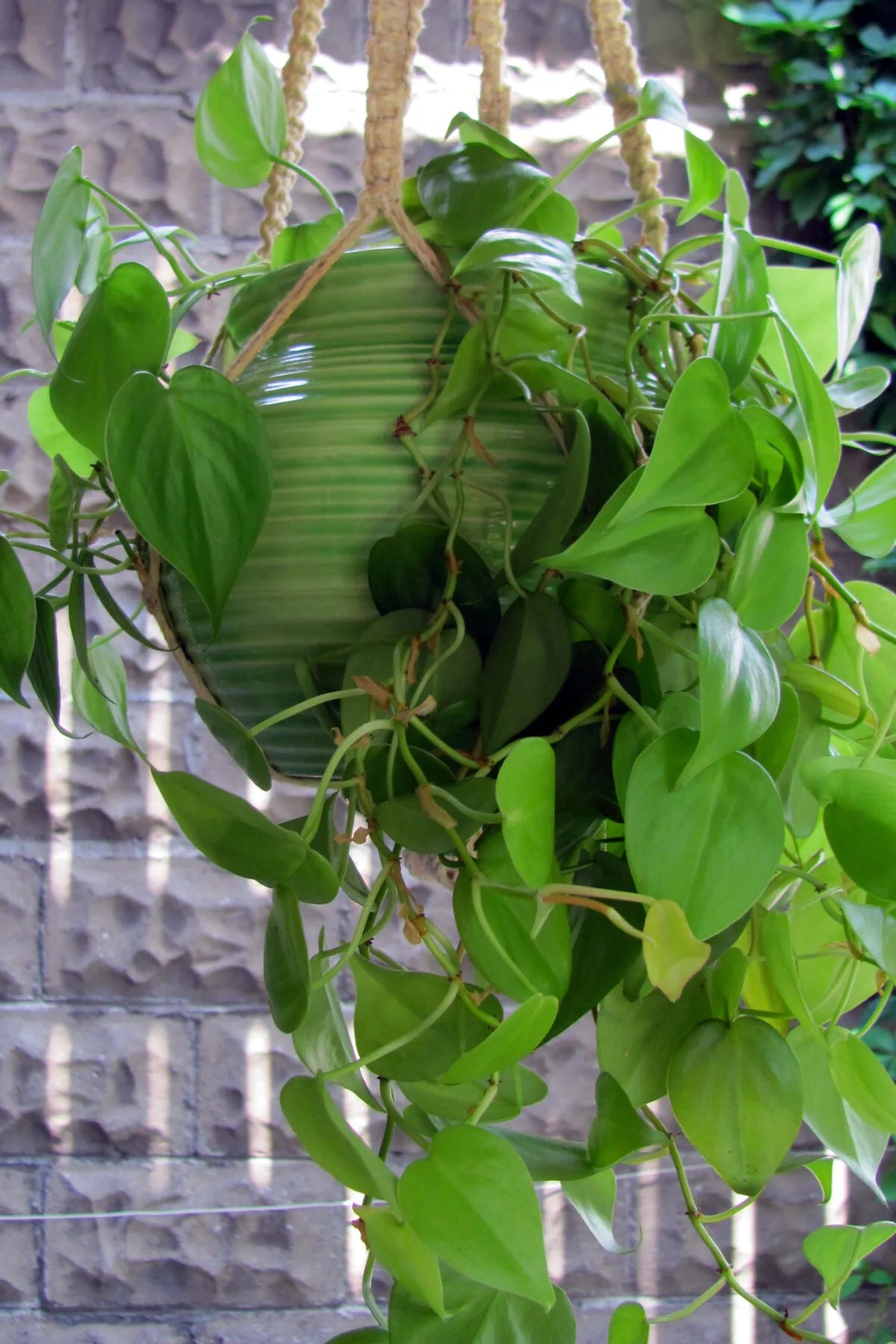
Heartleaf philodendron is also called sweetheart plant, and she is a sweetheart indeed. Tumbling enthusiastically out of the pot, vines grow in a dense carpet of heart-shaped leaves on delicate stems. The mane of vines dangles gracefully and has the most fabulous drape.
Winning the hearts and minds of plant people since the 1950s, heartleaf philodendron is a beautiful trailing houseplant with a strong constitution. A bit of moisture and light is all they need.
Though heartleaf philodendron will adapt and continue to grow in low light, plants placed in morning sun will be bushier and have their best leaf colors brought out.
4. English Ivy (Hedera helix)
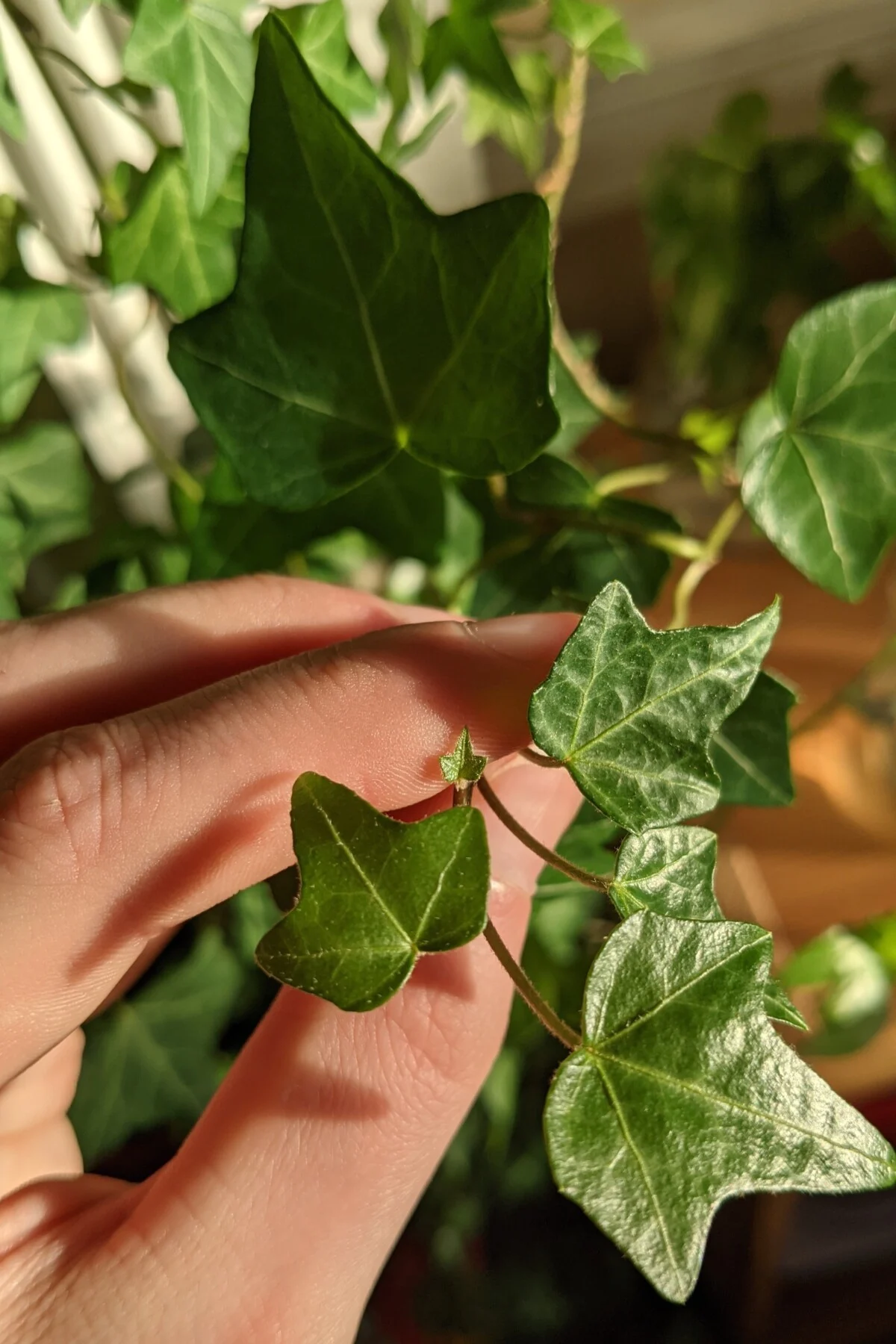
One of the most wonderful things about the indoor garden is you can grow as many invasive plants inside the home as you like! And English ivy is one invasive species that’s best relegated to houseplant-only status in North America.
Indoors, English ivy is much better behaved and relatively easy to grow. It likes the bright light of an east or north exposure, prefers to dry out between deep waterings, and enjoys cooler temperatures between 50°F and 70°F (10°C and 21°C).
Give English ivy these things and it will quickly fill in with its characteristic lobed leaves on trailing or climbing vines. What’s neat about English ivy is that as the vines mature, they become woody and rigid. When the stems are still young, they can be trained to grow up a trellis, around a windowsill, or spiraling around a pole. It’s a fine plant for topiaries, too.
5. String of…
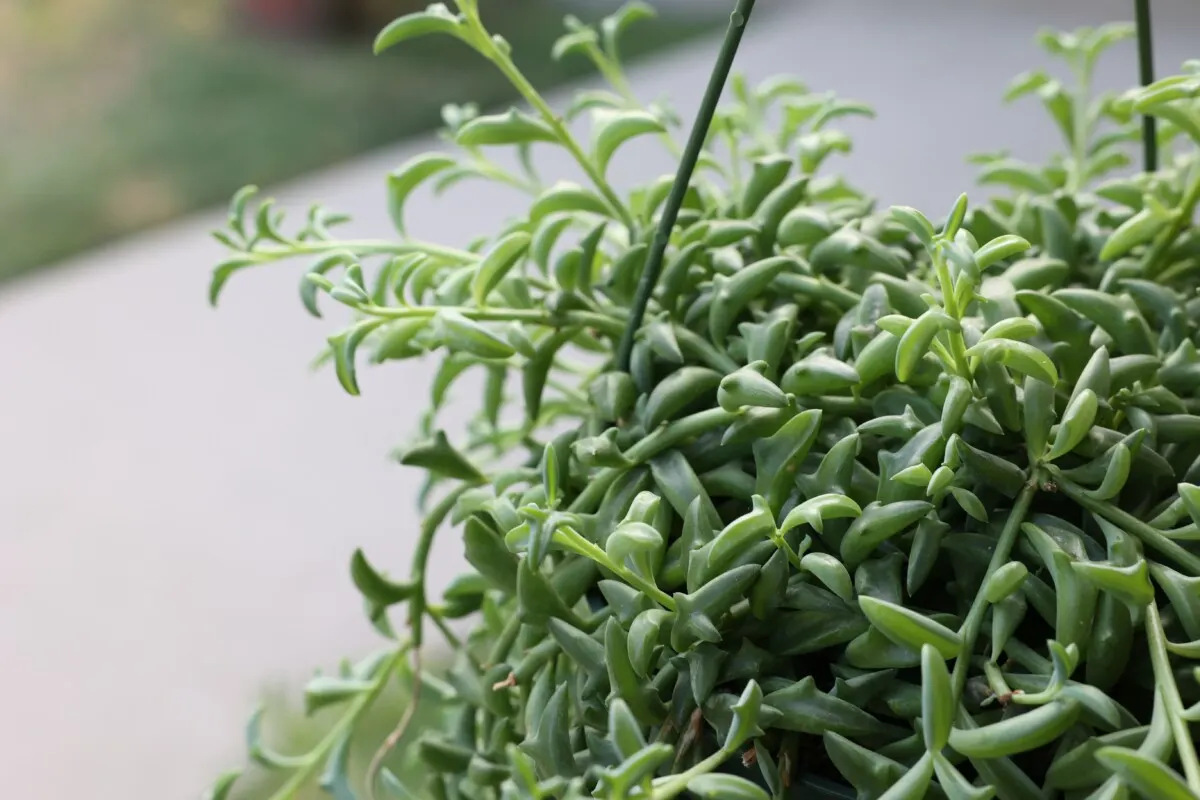
The ‘string of’ plants is a sizeable group of trailing succulents that share an incredibly distinctive look and habit.
When elevated, these plants will pour out of the pot and drop in a fairly straight line, hanging down like beaded curtains. In the company of other hanging plants, they add unique and intriguing textures and shapes to contrast the usual vines.
The shape the fleshy leaves take looks remarkably like the plant’s namesake:
- String of Pearls (Curio rowleyanus)
- String of Dolphins (Curio × peregrinus)

- String of Hearts (Ceropegia woodii)
- String of Tears (Curio citrifromis)
- String of Turtles (Peperomia prostrata)

- String of Bananas (Curio radicans)
- String of Watermelons (Curio herreanus)
Most of the ‘string of’ plants do well in bright light with just a titch of direct sun during the day. And since they’re succulents, let the soil become bone dry before you even think about giving them a drink.
6. Lipstick Plant (Aeschynanthus radicans)
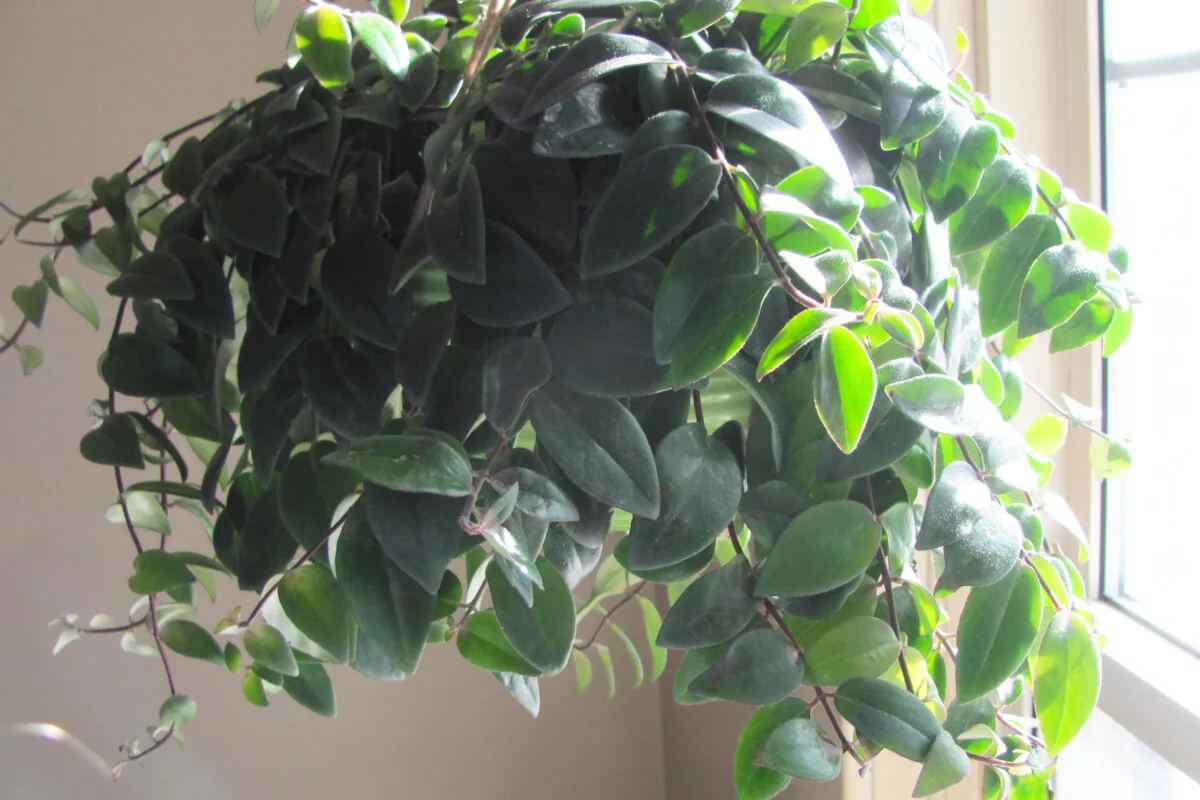
Lipstick plant is so named for its crimson red tubular flowers that emerge from upright buds along the trailing stems. The pretty blooms twist out of the sheaths, much like a tube of lipstick. It can be brought to bloom practically year-round but mine tends to be most prolific from summer to fall.
Even when not in flower, lipstick plant is still quite the looker. It vines out densely with ovate leaves that are thick and leathery and slightly furry. Held aloft, lipstick plant creates an elegant mound of cascading and arching vines.
As a tropical epiphyte native to Malaysia, lipstick plant appreciates consistently moist soil with good drainage and higher-than-average humidity. To encourage blooms, place plants in a spot with plenty of bright light with some sunlight filtering for part of the day.
7. Button Fern (Pellaea rotundifolia)

As anyone with an unrequited love for ferns can tell you, look at them sideways, and they die. Beautiful but temperamental, what often does most house ferns in isn’t a flair for the dramatic, but rather low humidity. It’s exceedingly hard for homes in temperate climates to compete with the moist conditions of tropical forests without using a humidifier.
Button fern is one that’s a bit more relaxed about its environment. Well, as far as ferns go. The plant doesn’t require misting or especially humid conditions that are do-or-die for most other ferns. Although button fern would not be unhappy in a bathroom or kitchen where waters run frequently.
The lovely and serene arching fronds of button fern are dotted with coarse rounded leaflets, trailing down on wiry brownish-red stems. Keep her high up in the bright but subdued light of a north or east window and irrigate regularly, never allowing the soil to dry out.
8. Burro’s Tail (Sedum morganianum)

A chonky boy, burro’s tail (also called donkey’s tail) has some serious weight to throw around. It grows hefty trailing stems, up to 24 inches long, each thick with plump and fleshy blue-green leaves in a teardrop shape. Equally burly, the ‘Burrito’ cultivar has rounded leaves without the pointed tips.
Burro’s tail is a succulent native to Mexico and likes things sunny and warm. The plant needs high light to fill out, at least several hours of direct sun each day. As water is stored in their fat leaves, irrigate burro’s tail only when the soil is dry.
Despite its beefy appearance, burro’s tail is sensitive to movement and should be hung up in areas with low foot traffic. So much as brushing against the plant can cause leaves and stems to detach – but these can be propagated in the traditional succulent fashion.
9. Purple Heart (Tradescantia pallida)

With so many shades of green in the indoor garden, a houseplant with bolder hues is a welcome addition.
Purple heart gives gorgeous foliage color year-round. For the most vibrant leaves, they need bright light with a few hours of direct sun every day. An east or west exposure is ideal. New growth starts off green and turns a deep shade of violet with enough light. Purple heart will remain green in places too shady.
A rambling spiderwort, purple heart is grown outdoors as a fast-growing ground cover in zones 7 to 10. Inside, it’s equally well-suited as a hanging plant to highlight its long tresses. The lance-shaped leaves, growing to 7 inches long, wrap like spathes around the stems and are covered in tiny white hairs.
Purple heart is not a succulent, but it has succulent-like qualities. The leaves are thicker and fleshier than your average spiderwort, making these plants moderately drought-tolerant. And similar to succulents, purple heart positively thrives on vague neglect.
10. Asparagus Fern (Asparagus densiflorus)
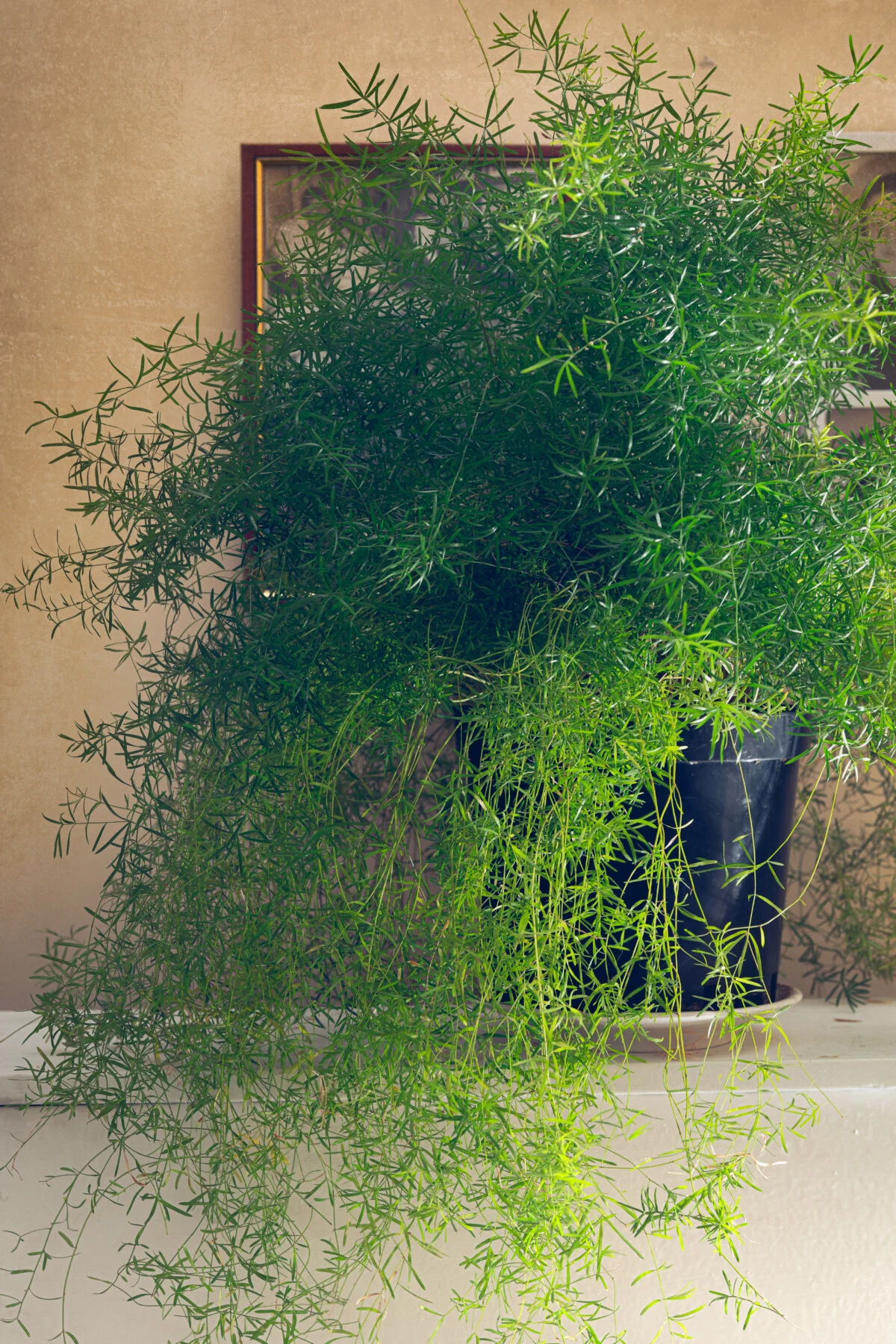
Asparagus fern – with its fluffy and feathery foliage – certainly looks like a fern. But because it’s not really a fern, asparagus fern is actually easy to care for. A fern without the sass.
Arising from tuberous roots, asparagus fern grows in mounds of bushy, semi-stiff stems that grow up and then arch down from the weight of its plumage. The masses of leaves, technically called ‘cladodes’, are soft and needle-like stems that function like leaves, each growing to 1 inch long.
Hung up, asparagus fern spills out to a breadth of about 3 feet. Maintain an even shape by trimming back branches as needed. The plant is so hardy you can chop it back to just above the tuber and it’ll resprout fresh poufs.
Average household humidity is just fine for keeping asparagus fern growing. Though they can adapt to lower light, place plants in bright filtered light for the fullest and fluffiest cascades. It’s good to let the soil dry out a little between waterings, but not too much. Asparagus fern needles will start to drop at the first sign of underwatering.

Get the famous Rural Sprout newsletter delivered to your inbox.
Including Sunday musings from our editor, Tracey, as well as “What’s Up Wednesday” our roundup of what’s in season and new article updates and alerts.


